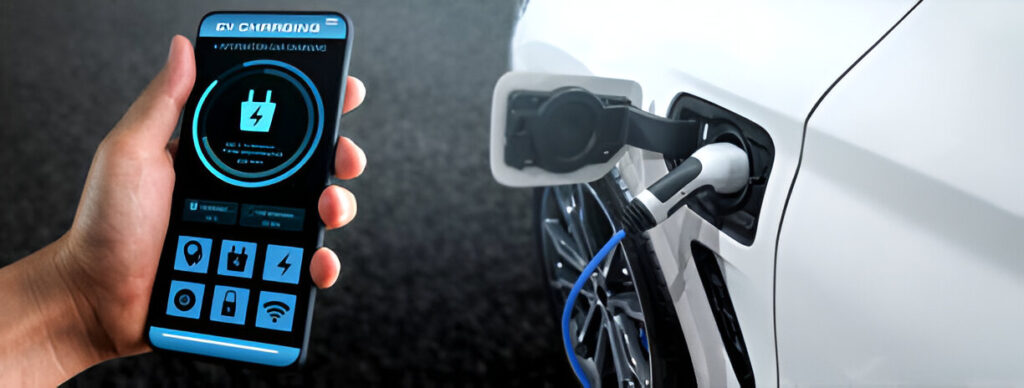Key Takeaways:
- Explore the benefits of high power chargers in reducing EV charging times efficiently.
- Learn about the technological advancements making fast charging possible.
- Understand how fast-charging infrastructure supports sustainable transportation.
Introduction
The electric vehicle (EV) revolution is underway, with more consumers opting for greener alternatives over traditional gasoline vehicles. A critical component facilitating this shift is the availability of fast chargers for EVs. These chargers significantly reduce the time it takes to recharge an EV, thus making electric transport a more practical option for everyday use. As urban centers and rural areas adapt to the growing presence of EVs, the role of fast chargers becomes even more pronounced in reducing carbon emissions and dependency on fossil fuels.
As the demand for rapid charging grows, advancements in high power charging technology continue to play a pivotal role in reducing charging time. This development is crucial for enhancing user convenience and promoting broader adoption of electric vehicles. By addressing one of the main concerns of prospective EV owners—charging time—high power chargers are transforming the transportation landscape, paving the way for a future that embraces sustainable energy solutions.
Technology Advancements in High Power Charging
Increased Charging Speed
The technology behind high power chargers has evolved significantly over recent years, driven by the need for speed and efficiency. Current systems are designed to deliver much higher currents than standard chargers, dramatically reducing charging times. One standout feature of these systems is their ability to replenish a vehicle’s battery to 80% capacity in as little as 20 to 30 minutes. Such swift charging eliminates the downtime that traditional charging methods entail, allowing drivers to return to the road quickly. This capability transforms drivers’ interaction with their EVs, promoting longer journeys and spontaneous travel plans without worrying about lengthy charging sessions.
Efficiency and Energy Management
High power chargers employ sophisticated smart energy management systems to optimize charging efficiency. These systems have algorithms that monitor and adjust the power flow according to the battery status and grid load conditions. Such precision ensures that power delivery is fast and safe, shielding vehicle batteries from potential damage while maximizing available energy resources. These management systems are not only beneficial for individual users but also provide broader grid stability advantages. They contribute to a robust and effective electrical grid infrastructure by balancing supply and demand through seamless integration with renewable energy sources like solar or wind.
Infrastructure Development and Its Role
The rise of high power charging stations is a foundational element of constructing a robust EV network. Many urban locales are witnessing the deployment of rapid-charging stations in high-traffic areas like highways, parking facilities, and commercial centers. Range anxiety, a major worry among prospective EV customers who fear becoming trapped without access to charging facilities, is greatly reduced by this expanding infrastructure. As more charging stations are constructed, the overall convenience of owning and operating an EV increases significantly. Furthermore, the strategic placement of these facilities ensures that electric vehicles can seamlessly fit into users’ daily routines, whether they are commuting to work or embarking on cross-country adventures.
Benefits of High Power Charging for EVs
High power charging offers a plethora of benefits, not only transforming consumer experiences but also paving the way for a cleaner environment. Firstly, by drastically reducing charging times, these chargers lower a significant barrier to EV adoption, encouraging more drivers to transition from fossil-fueled vehicles. This shift reduces individual carbon footprints and catalyzes the automotive industry’s shift towards greener practices. Concurrently, high power chargers encourage manufacturers to invest more deeply in EV technology, spurring innovations that improve battery life, performance, and sustainability.
Moreover, the increased efficiency of high power chargers reduces energy wastage. By optimizing energy use, these systems cut down on the emissions associated with operating electric vehicles, making high power charging a cornerstone of sustainable transportation. Additionally, for regions heavily reliant on renewable energy, coupling high power chargers with clean power sources ensures that the entire cycle of electricity production, delivery, and consumption is environmentally conscious, maximizing the benefits of a green future.
Consumer Demand and Market Trends
The demand for electric vehicles and the infrastructure needed for charging them is rising along with consumer awareness of environmental issues. Reports from the U.S. Department of Energy highlight the direct correlation between environmental consciousness and the increase in EV sales. This rise in consumer interest is expected to continue its upward trajectory, further driving the need for efficient, high-power charging solutions. Government incentives and subsidies for EV purchases and charging station installations also play a crucial role in shaping market trends, encouraging investments that prioritize sustainability.
Future Prospects of High Power Charging
Looking toward the future, prospects for high-power charging systems appear promising. Continuous technological improvements and the resultant increase in efficiency signal a bright era for electric vehicles. As more innovations emerge, the ability to charge vehicles faster without compromising safety or efficiency will transform driving experiences worldwide. This rapid advancement in charging technology also supports the rise of other electric modes of transportation, such as electric trucks and buses, further entrenching the role of high power charging in the broader transportation sector.
The potential for high power chargers to integrate with digital networks opens new possibilities for personalization and optimization. In the future, smart chargers could communicate with vehicles’ onboard systems to provide data-driven charging solutions tailored to individual user habits and schedules. Furthermore, the synergy between high power chargers and renewable energy sources will likely strengthen society one step closer to a future where all energy consumed is clean and renewable.
Ultimately, as research continues and EV adoption grows, the potential for high-power charging to further reduce environmental impact and support sustainable transportation solutions seems boundless. The journey to electrification is well underway, with high-power charging stations positioned as key drivers in transforming how individuals and communities interact with transport and energy. This shift represents technological advancement and a commitment to a cleaner and more sustainable future for all.


